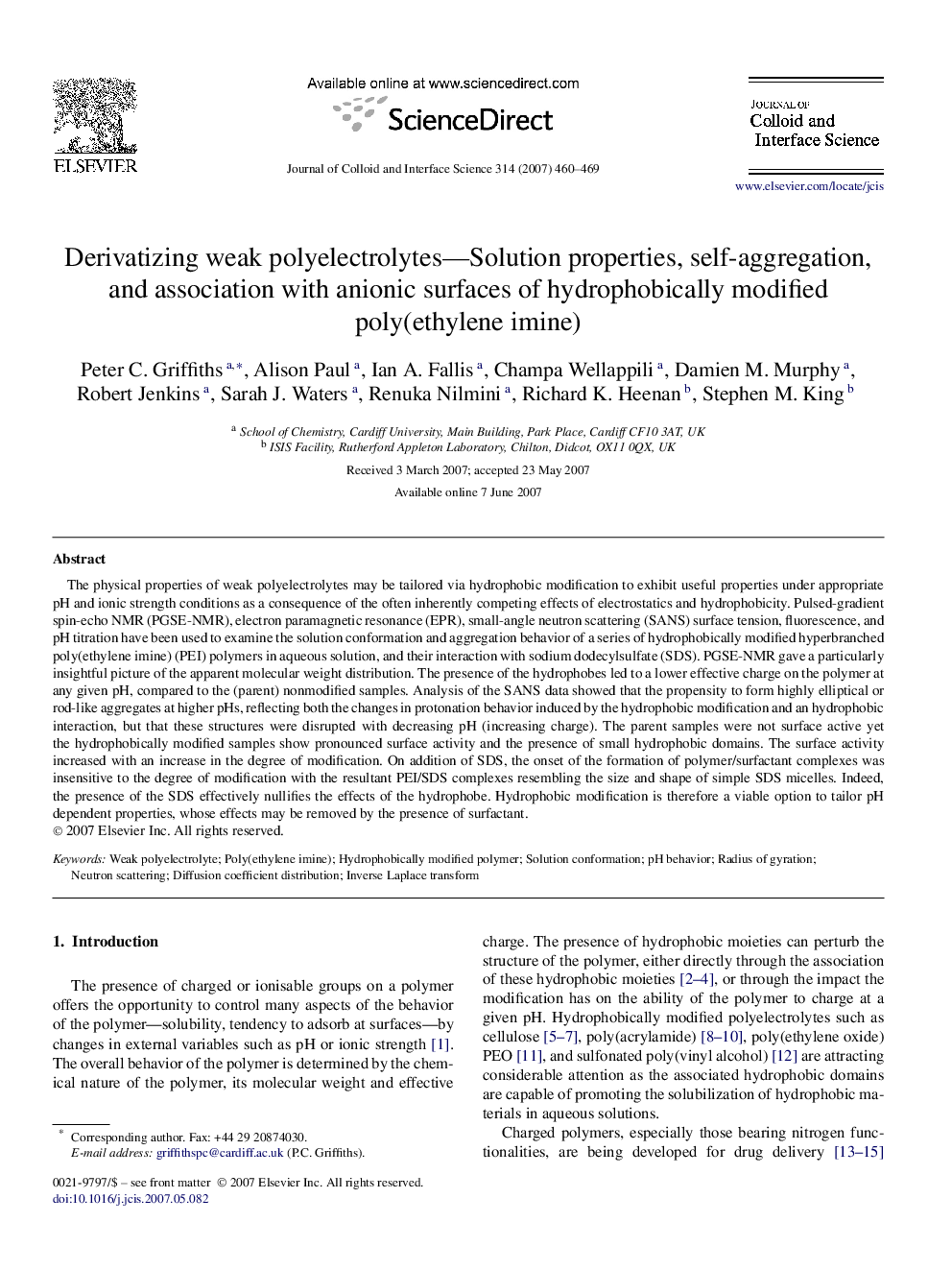| کد مقاله | کد نشریه | سال انتشار | مقاله انگلیسی | نسخه تمام متن |
|---|---|---|---|---|
| 612112 | 880691 | 2007 | 10 صفحه PDF | دانلود رایگان |

The physical properties of weak polyelectrolytes may be tailored via hydrophobic modification to exhibit useful properties under appropriate pH and ionic strength conditions as a consequence of the often inherently competing effects of electrostatics and hydrophobicity. Pulsed-gradient spin-echo NMR (PGSE-NMR), electron paramagnetic resonance (EPR), small-angle neutron scattering (SANS) surface tension, fluorescence, and pH titration have been used to examine the solution conformation and aggregation behavior of a series of hydrophobically modified hyperbranched poly(ethylene imine) (PEI) polymers in aqueous solution, and their interaction with sodium dodecylsulfate (SDS). PGSE-NMR gave a particularly insightful picture of the apparent molecular weight distribution. The presence of the hydrophobes led to a lower effective charge on the polymer at any given pH, compared to the (parent) nonmodified samples. Analysis of the SANS data showed that the propensity to form highly elliptical or rod-like aggregates at higher pHs, reflecting both the changes in protonation behavior induced by the hydrophobic modification and an hydrophobic interaction, but that these structures were disrupted with decreasing pH (increasing charge). The parent samples were not surface active yet the hydrophobically modified samples show pronounced surface activity and the presence of small hydrophobic domains. The surface activity increased with an increase in the degree of modification. On addition of SDS, the onset of the formation of polymer/surfactant complexes was insensitive to the degree of modification with the resultant PEI/SDS complexes resembling the size and shape of simple SDS micelles. Indeed, the presence of the SDS effectively nullifies the effects of the hydrophobe. Hydrophobic modification is therefore a viable option to tailor pH dependent properties, whose effects may be removed by the presence of surfactant.
The presence of the hydrophobic groups on branched PEI with molecular weight 25,000 g mol−1 rendered it surface active and led to the formation of hydrophobic domains. With decreasing pH, the rod-like aggregates beak-up into smaller, more elliptical units.Figure optionsDownload as PowerPoint slide
Journal: Journal of Colloid and Interface Science - Volume 314, Issue 2, 15 October 2007, Pages 460–469